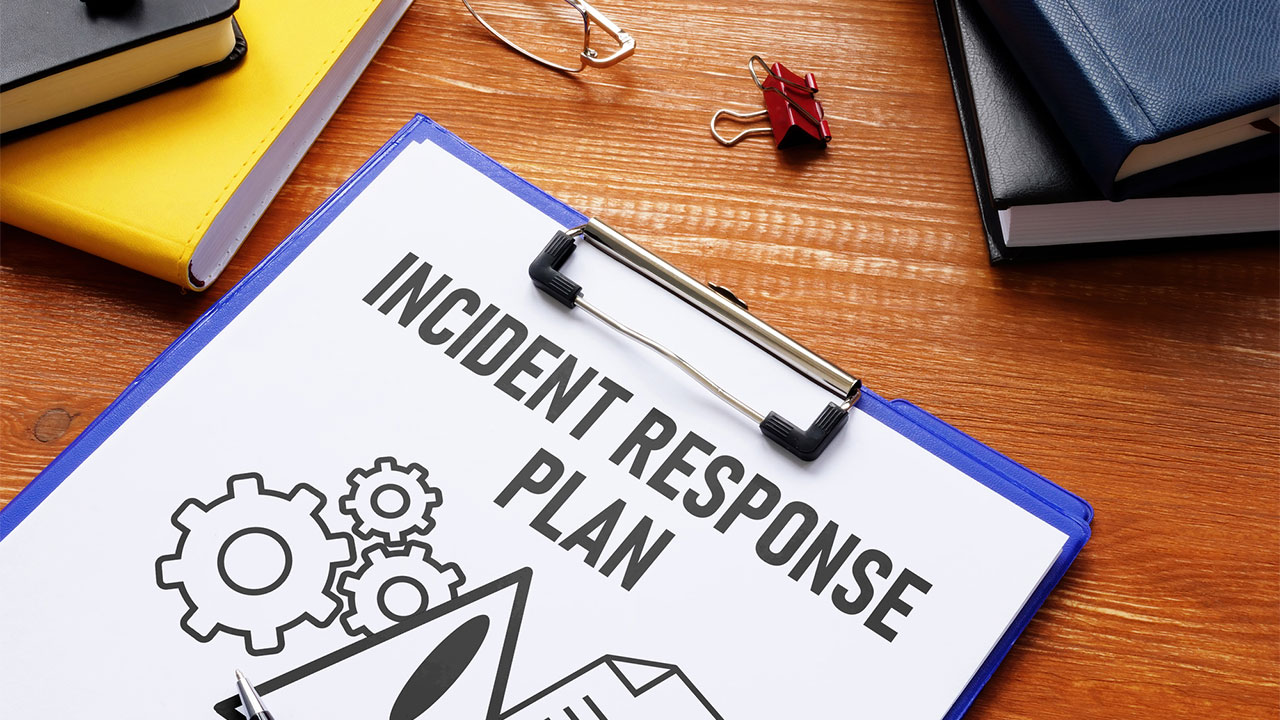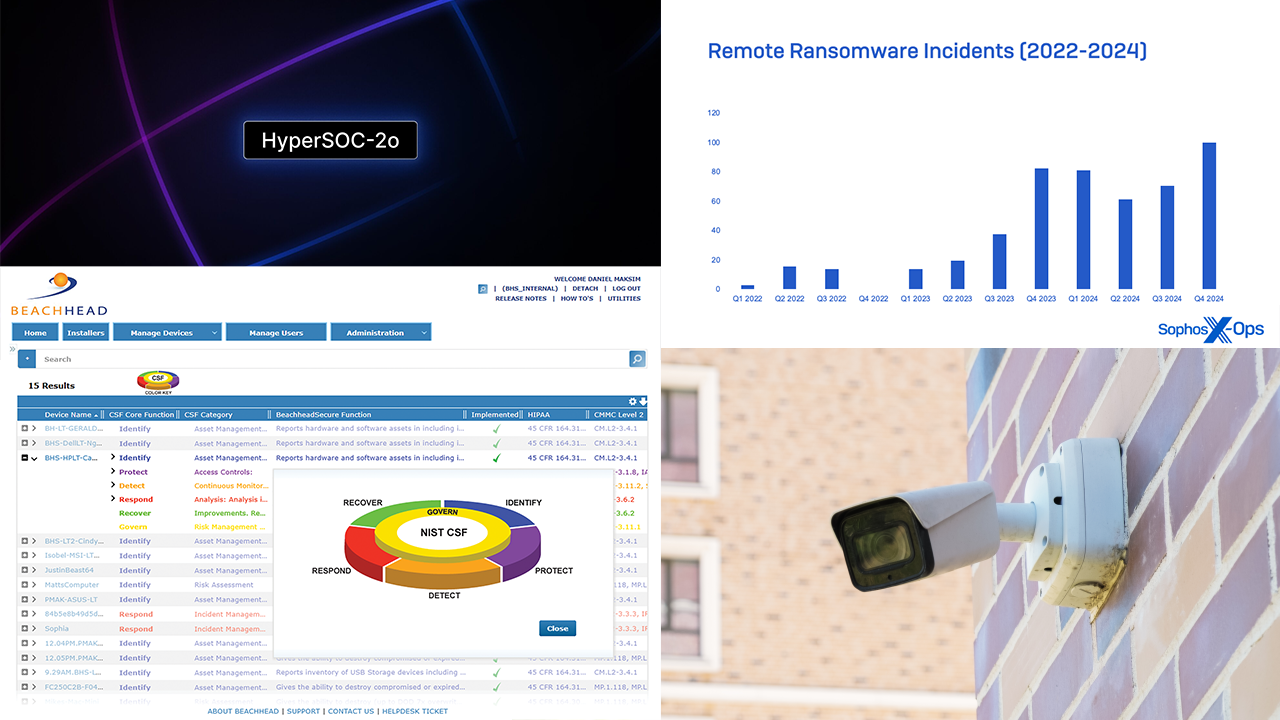A well-structured cybersecurity incident response plan (IRP) is essential for minimizing damage and recovery time during a cyberattack. This guide walks you through the key components of an effective IRP, helping you and your clients stay prepared for threats such as ransomware, phishing, and data breaches.
Key Components of a Cybersecurity Incident Response Plan
1. Define Roles and Responsibilities
- Actionable Tips:
- Assign key roles for incident response, including an incident manager, technical leads, communication specialists, and decision-makers.
- Create a clear chain of command to avoid confusion during emergencies.
- Key Insight:
- For MSPs: Assign roles for your team while also helping clients assign roles internally.
- For Clients: Having defined roles ensures faster, coordinated responses.
- Next Steps:
- Draft an incident response team (IRT) chart and include contact information for all members.
- Provide training for team members to understand their specific roles.
2. Identify and Classify Incidents
- Actionable Tips:
- Establish criteria for identifying and categorizing incidents by severity (e.g., low, medium, high, or critical).
- Use examples like phishing emails, DDoS attacks, or ransomware to illustrate each category.
- Key Insight:
- For MSPs: Clear classification helps prioritize response efforts effectively.
- For Clients: Consistent criteria ensure incidents are not underestimated or overlooked.
- Next Steps:
- Develop a classification matrix and train staff to categorize incidents accurately.
- Integrate incident classification into your PSA or ticketing system for streamlined management.
3. Establish Detection and Monitoring Protocols
- Actionable Tips:
- Deploy tools like Security Information and Event Management (SIEM) systems to monitor network activity in real-time.
- Set automated alerts for unusual behavior, such as login attempts from unknown locations or large data transfers.
- Key Insight:
- For MSPs: Proactive detection tools allow for quicker containment of threats.
- For Clients: Continuous monitoring helps reduce the time attackers remain undetected.
- Next Steps:
- Conduct regular threat hunting exercises to identify potential vulnerabilities.
- Partner with a SOC-as-a-Service provider to offer 24/7 monitoring.
4. Create a Step-by-Step Response Workflow
- Actionable Tips:
- Develop a clear process for each stage of the response:
- Identification: Confirm and categorize the threat.
- Containment: Isolate affected systems to prevent further spread.
- Eradication: Remove malicious code or compromised accounts.
- Recovery: Restore data and systems from backups.
- Post-Incident Review: Analyze the incident to identify lessons learned.
- Develop a clear process for each stage of the response:
- Key Insight:
- For MSPs: Standardized workflows ensure faster, repeatable responses across clients.
- For Clients: Clear steps reduce confusion and improve recovery times.
- Next Steps:
- Create visual diagrams of workflows to simplify understanding for non-technical stakeholders.
- Test workflows with tabletop exercises to identify and resolve gaps.
5. Define Communication Protocols
- Actionable Tips:
- Develop templates for internal notifications, client updates, and regulatory reporting.
- Assign a single point of contact (SPOC) to handle external communications.
- Key Insight:
- For MSPs: Clear communication builds trust during incidents.
- For Clients: Properly timed updates prevent misinformation and reduce panic.
- Next Steps:
- Establish communication channels (email, secure messaging apps, etc.) for use during incidents.
- Pre-approve press release templates with clients to streamline public disclosures when necessary.
6. Ensure Regular Testing and Updates
- Actionable Tips:
- Conduct incident response drills and tabletop exercises at least twice a year.
- Update the plan based on feedback, changes in business operations, or evolving threats.
- Key Insight:
- For MSPs: Testing builds team confidence and ensures readiness for actual incidents.
- For Clients: Regular updates reflect their current business and security needs.
- Next Steps:
- Use simulated attacks to validate each phase of your response plan.
- Review and revise your IRP after every significant incident or drill.
Checklist – Building a Cybersecurity Incident Response Plan
- Have you assigned clear roles and responsibilities within your incident response team?
- If Yes:
- Ensure all team members are trained and aware of their duties.
- If No:
- Create an incident response team chart and define roles immediately.
- Do you have a system for identifying and classifying incidents?
- If Yes:
- Periodically review classification criteria for relevance to emerging threats.
- If No:
- Develop a classification matrix and train staff to use it effectively.
- Are your detection and monitoring tools configured to alert for unusual activity?
- If Yes:
- Test the alert thresholds regularly to reduce false positives.
- If No:
- Deploy SIEM systems or partner with a SOC provider to enhance monitoring.
- Have you established a step-by-step workflow for incident response?
- If Yes:
- Document workflows and provide refresher training for key stakeholders.
- If No:
- Create workflows for each stage of incident response and test them with tabletop exercises.
- Do you have predefined communication protocols for incidents?
- If Yes:
- Ensure templates are updated regularly to reflect changing regulatory requirements.
- If No:
- Develop templates and establish secure communication channels immediately.
- Are you regularly testing and updating your incident response plan?
- If Yes:
- Use feedback from drills and real incidents to refine the plan further.
- If No:
- Schedule biannual testing and review sessions to ensure readiness.
A comprehensive cybersecurity incident response plan is crucial for minimizing damage and downtime during a cyberattack. By including defined roles, step-by-step workflows, and regular testing, MSPs can ensure they and their clients are prepared to respond effectively to evolving threats. Use this guide and checklist to build and refine your Incident Response Plan.
Next Steps
- To get more helpful guidance on this topic, check out our Cybersecurity Answer Center.
- Have a question for our experts? Send it to editors@channelpronetwork.com
ChannelPro has created this resource to help busy MSPs streamline their decision-making process. This resource offers a starting point for evaluating key business choices, saving time and providing clarity. While this resource is designed to guide you through important considerations, we encourage you to seek more references and professional advice to ensure fully informed decisions.
Featured image: iStock














